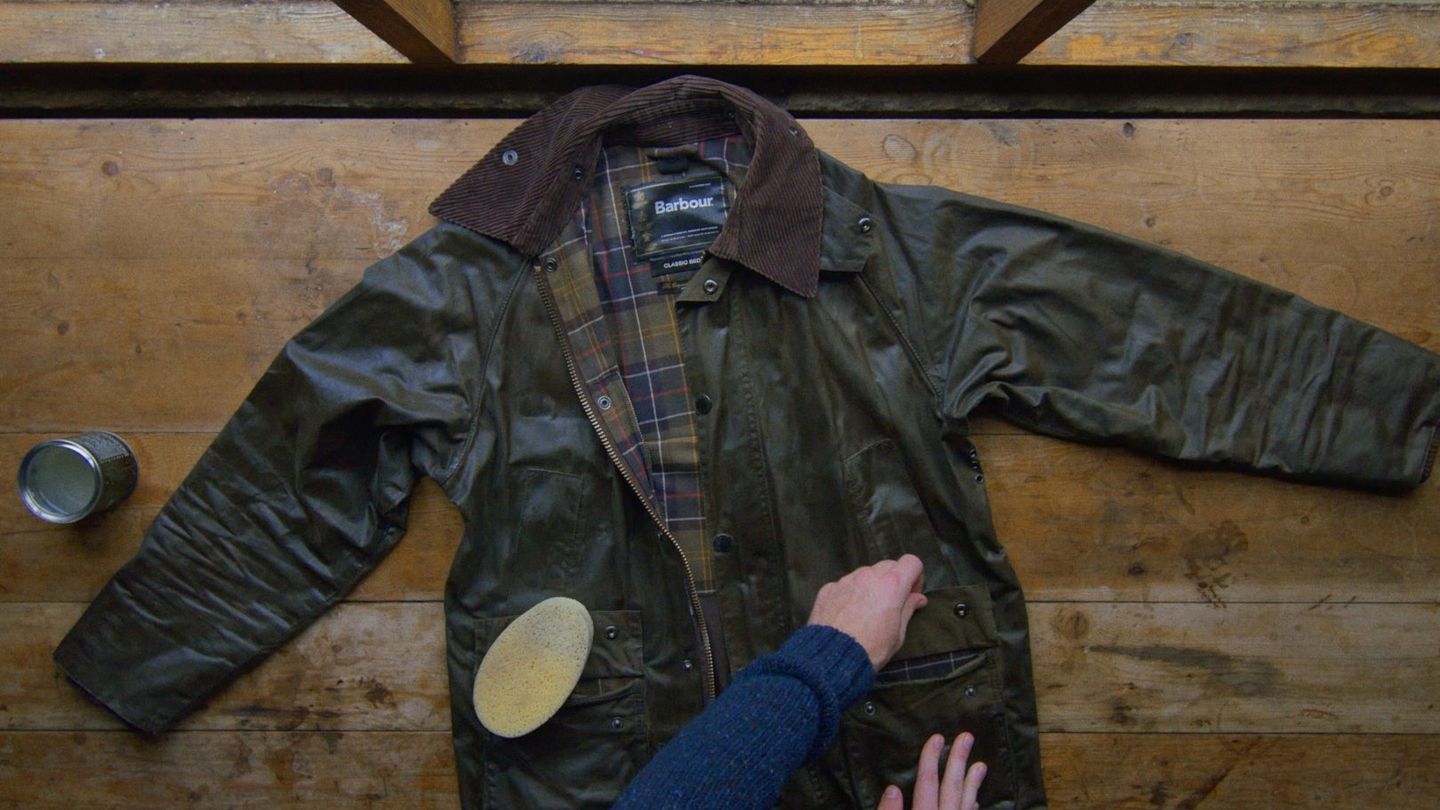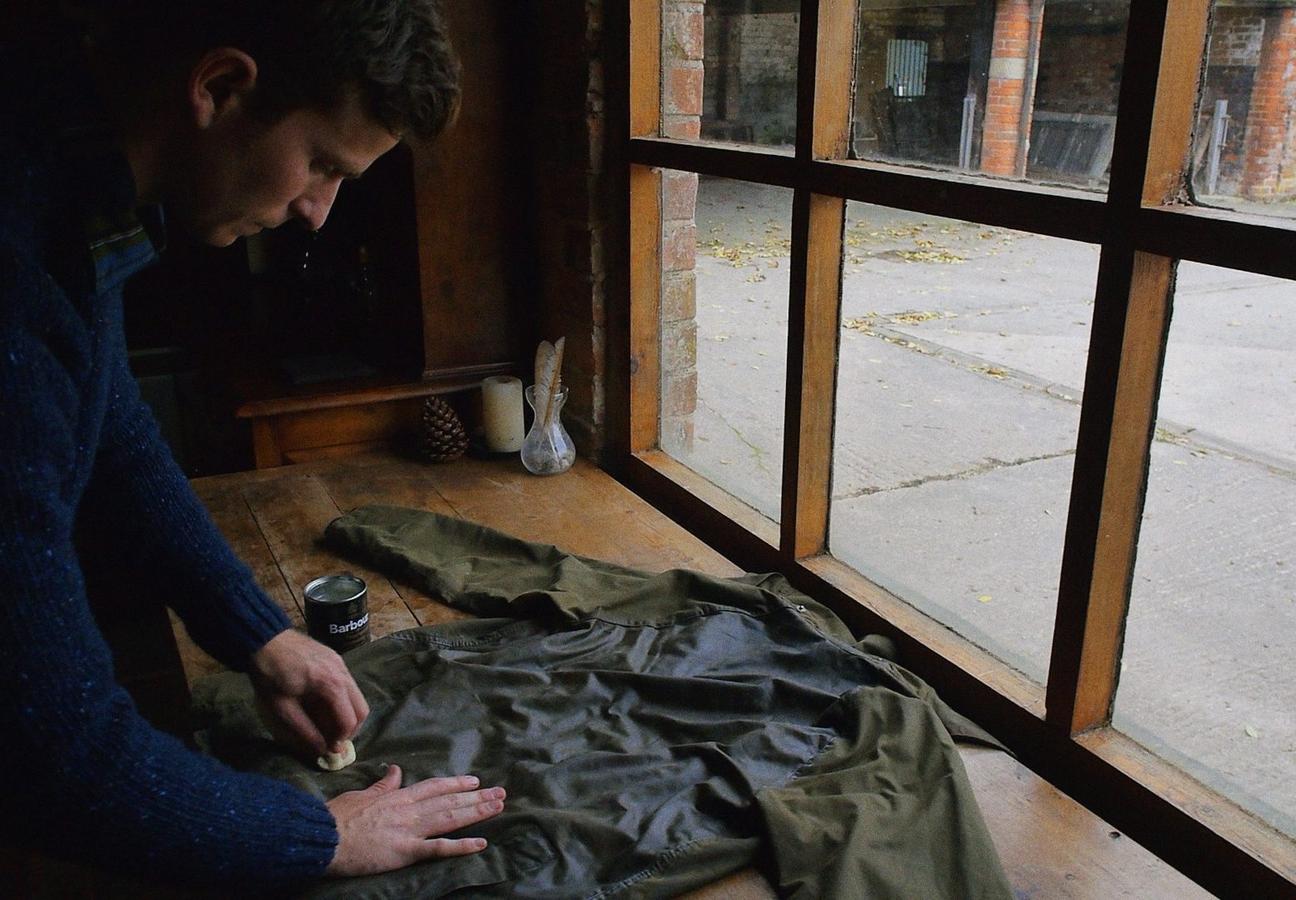

Here’s why you should re-wax your Barbour jacket
We asked the British outerwear icon how to extend the life of its rugged canvas jackets — and what’s in its unique wax
Words: Jonathan Wells
Is there any item of outerwear more British than Barbour’s waxed jacket? We’d wager not. Iconic individuals from the Queen to James Bond have been seen to zip up these dark green garments over the years, and the jackets are as beloved by farmers and fishermen as they are by the fashion elite.
And the oily appeal of Barbour’s South Shields-made jackets can be found in its distinctive wax. Formulated to be waterproof, protective and restorative, this unique substance is both the key to the brand’s success and a fiercely guarded secret.
But how often should you send your jacket back to Barbour for re-waxing? A service that costs just £35, the process can rejuvenate and extend the life of your jacket for years to come. But why do you need to re-wax, how do the Barbour team apply this restorative coating, and just what is in that secret formula?
Re-waxing will extend the life of your jacket
Barbour’s wax jackets are renowned for their durability. With weather-resistant properties and a patina that improves with age, they remain one of the toughest items of outerwear on the market. We asked Martin Ritchie, factory manager at the brand’s base of operations, how re-waxing the densely woven cotton strengthen the product’s longevity.
“The colour will remain bold and the restoration of the jacket will leave the fabric looking less worn,” says Ritchie, “ultimately resulting in a garment which is closer to its original colour and finish. And we recommend that you re-wax your jacket at least once a year to ensure that it always provides the best protection.”
So what is in Barbour’s specially formulated wax?
Barbour’s formulated wax has followed the same recipe for many years and is created using a mixture of hydrocarbon waxes. We’re not allowed to tell you what exactly goes into this special secret formula, but Ritchie says customers can rest assured that it doesn’t contain any harmful substances, and is environmentally friendly.
“Five years ago,” reveals the factory manager, “we developed a new resilient and longer-lasting wax for lightweight garments. It creates the same look and aesthetic, and offers the same protection against the weather, but this new wax is dry to touch once applied to the product.”
How are the jackets re-waxed?

For restoration of a wax jacket, Barbour’s specially formulated wax is melted in a vat that keeps it at 50 degrees and then applied by hand using a sponge.
“The re-waxing service follows a simple four-phase process,” says Ritchie. “Firstly, each jacket is assessed by skilled operators who will alter the amount of wax applied depending on the age and condition of the jacket.
“Next, the wax is applied to the front and back using a sponge, before excess wax is removed from the front and then the back. Finally, the seams are given attention. This final check allows for the garment to be completely restored to the best quality possible.”
And, once this process has been completed, the jacket is left to dry for 24 hours. Overall, re-waxing will leave you with a jacket just like new — a waxed garment as resilient and weather resistant as the day you bought it. And, if you re-wax at least once a year, your zip-up British icon will continue to provide the very best protection for many years to come.
Want to see how another British icon breathes new life into your garments? Step inside Crockett & Jones’ restoration centre…


